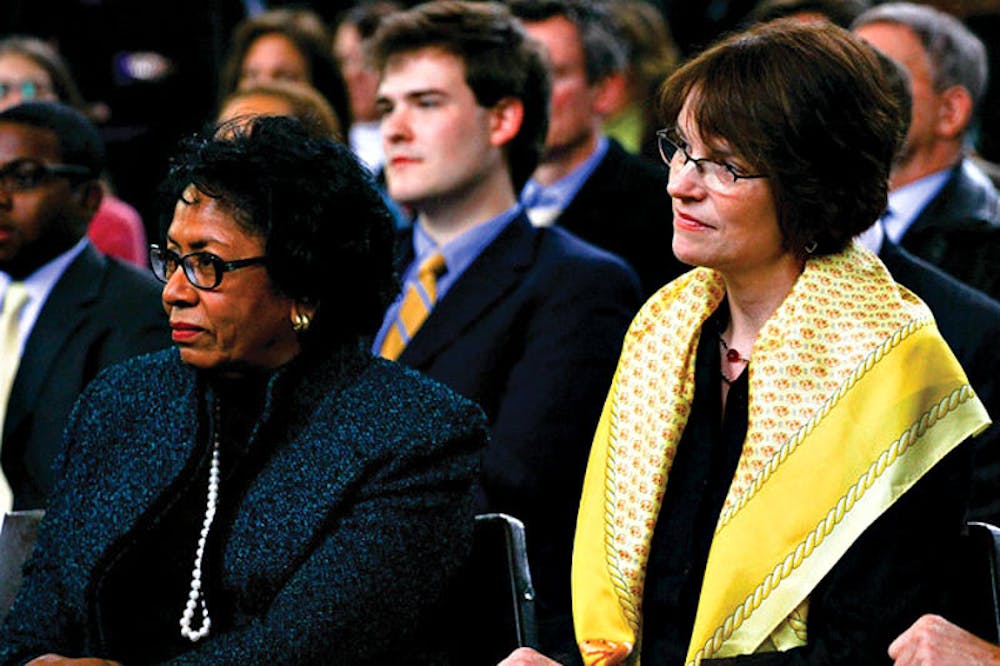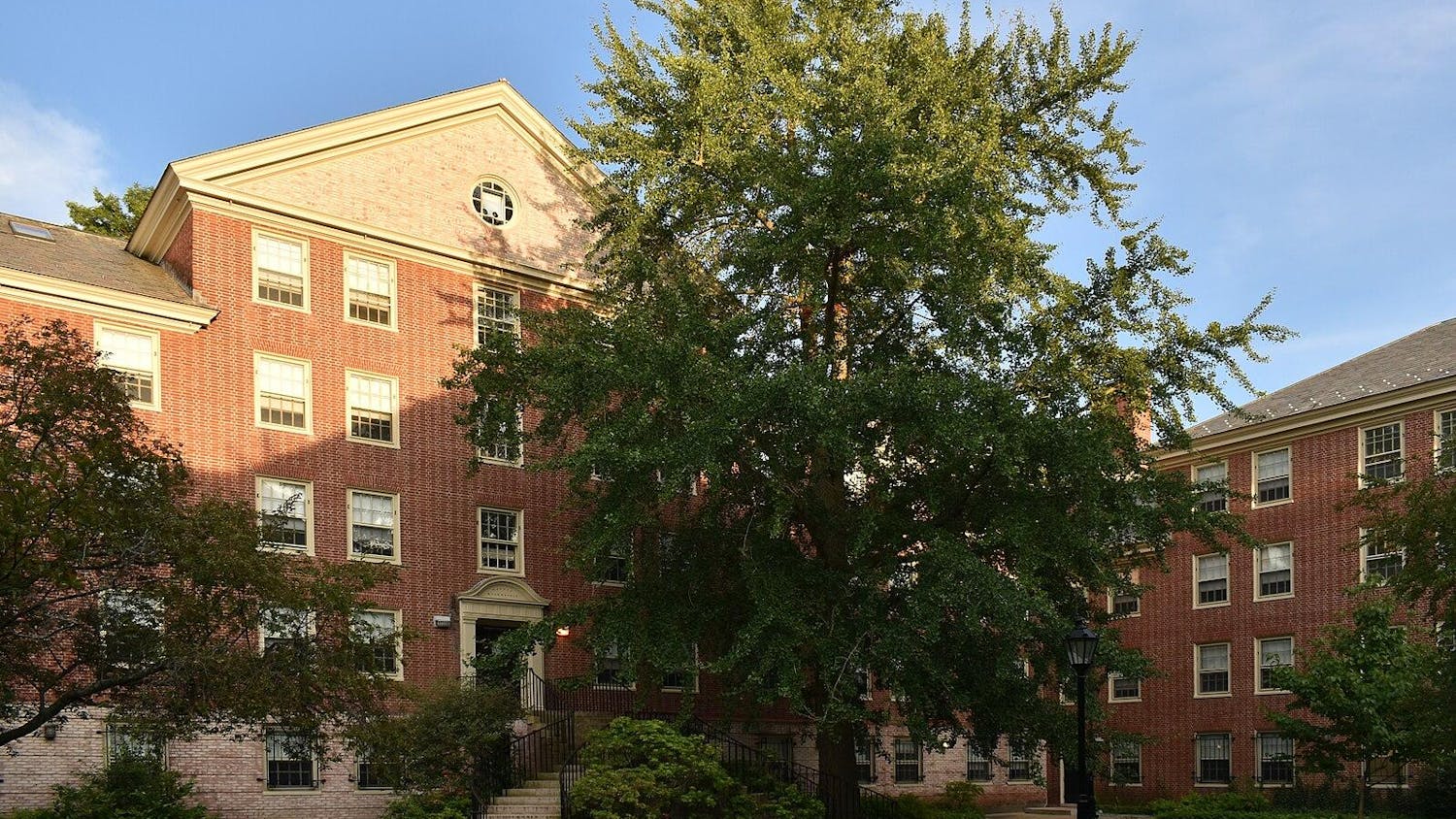When President Christina Paxson’s capital campaign launches sometime within the next few years, it will take its place in a long history of major fundraising efforts at Brown and could set the tone for future University fundraising. While no official timeline has been set, Paxson’s campaign will likely begin after the development of the University’s next strategic plan, which will follow the strategic planning committees’ final recommendations at the end of this school year.
Capitalizing on the past
Though the University is not currently in a capital campaign, it still aims to raise $200 million annually to fund yearly priorities, said Patricia Watson, senior vice president for advancement.
One of the greatest benefits of a capital campaign is that the strategic planning process preceding it compels the University to examine its institutional priorities, she said.
“It will build off the previous campaign’s success,” said Neil Steinberg ’75, president and CEO of the Rhode Island Foundation and former vice president for development under former President Ruth Simmons. The Campaign for Academic Enrichment under Simmons showed that donors respond to specific fundraising goals, such as financial aid, he said.
Both Steinberg and Watson said the Campaign for Academic Enrichment raised expectations for annual fundraising and broadened the donor base.
A number of donors during Simmons’ tenure donated to both the Campaign for Academic Enrichment and the Annual Fund, which are not mutually exclusive, Steinberg said.
“All of our work follows the strategic direction of the University,” Watson said. “We are focused on trying to raise money for the issues in front of us.”
Watson said she hopes the University will have a plan for its campaign by the time of Brown’s 250th anniversary celebration in 2014.
Administrators believe a new capital campaign will create a “sense of urgency” and engage donors who have not given recently or never given, she said.
“They respond to inspiration and vision,” Steinberg said.
A rich history
Though fundraising has always been essential for the financial health of private universities, the concept of the capital campaign began as recently as the 1950s, starting at elite institutions and eventually gaining popularity with most four-year — and some two-year — institutions of higher education today, said Stephen Nelson, higher education expert and senior scholar in the Leadership Alliance at Brown.
Former President Howard Swearer led the University’s first official “development campaign” from 1978 to 1983, Nelson said.
Though the Campaign for Academic Enrichment aimed to raise $1 billion in its first 10 years, it exceeded the goal by $600 million and raised three times as much as any previous University fundraising effort, Steinberg said.
Steinberg said he attributed the Campaign’s success to Simmons’ “inspired” leadership.
The Campaign’s silent phase — the period of a capital campaign when contributions are solicited from only select donors — was delayed until 2003 because of the events of 9/11. The time gap between the 2003 launch and the fundraising efforts under former President E. Gordon Gee hurt the University, Nelson said.
“Capital campaign” is an antiquated term that generally refers to raising money for projects such as new buildings or endowed chairs, Steinberg said, calling the Campaign for Academic Enrichment a “comprehensive campaign” because it addressed a variety of goals, including financial aid.
Fundraising fatigue?
Across the country, capital campaigns have become the fundraising norm at many universities. The trend is “becoming more and more that every president will do one,” Nelson said.
“Almost as soon as one campaign has ended, the planning for the next campaign begins,” he added, comparing it to political campaign fundraising.
Watson could not comment on whether it had been predetermined before Paxson was hired that she would launch a capital campaign.
The cycle of campaigning can exhaust presidents, who receive either the blame or the praise for the campaign’s outcome, Nelson said. In his research, he found that the prospect of starting a new capital campaign can shorten presidents’ tenures because they don’t want to start campaigns that might outlast their time in the position, he said.
Presidents are aware of this and can choose to delay the start of a campaign if they want to lengthen their tenures, Nelson said.
Capital campaigns occur at an institution on average every 10 years, Nelson said. The average university president’s tenure is about 8.5 years, according to a 2006 survey by the American Council on Education.
“The expectation of the president is that she’s the chief fundraiser for the institution,” Watson said.
Steinberg also said he saw fundraising as ingrained in the office.
But soliciting donations is only one part of the job for many university presidents, who might choose to emphasize campus engagement as well, Nelson said. “The notion that all they do is fundraising is a myth,” he said.
For alums, capital campaigns can be exhausting, Nelson said.
“It would be better if these institutions said to their donor base, ‘We are in a continual campaign,’” Nelson said.
He said a model that used continuous fundraising rather than capital campaigns would be more effective and less stressful on donors and the president.
But Steinberg said donor fatigue is not a significant concern. There is no reason to believe that donors are tapped out or that there is no new donor base for the University to tap into, he said, especially since it has been over two years since the last campaign ended.
Most universities follow guidelines set by the Council for Advancement and Support of Education that recommend an eight-year period for a comprehensive fundraising campaign, said Debra LaMorte, senior vice president for development and alumni relations at New York University. The guidelines also build in a period of rest between comprehensive campaigns to prevent possible donor fatigue, she said.
“It all starts with the vision of the president,” Steinberg said.

ADVERTISEMENT




